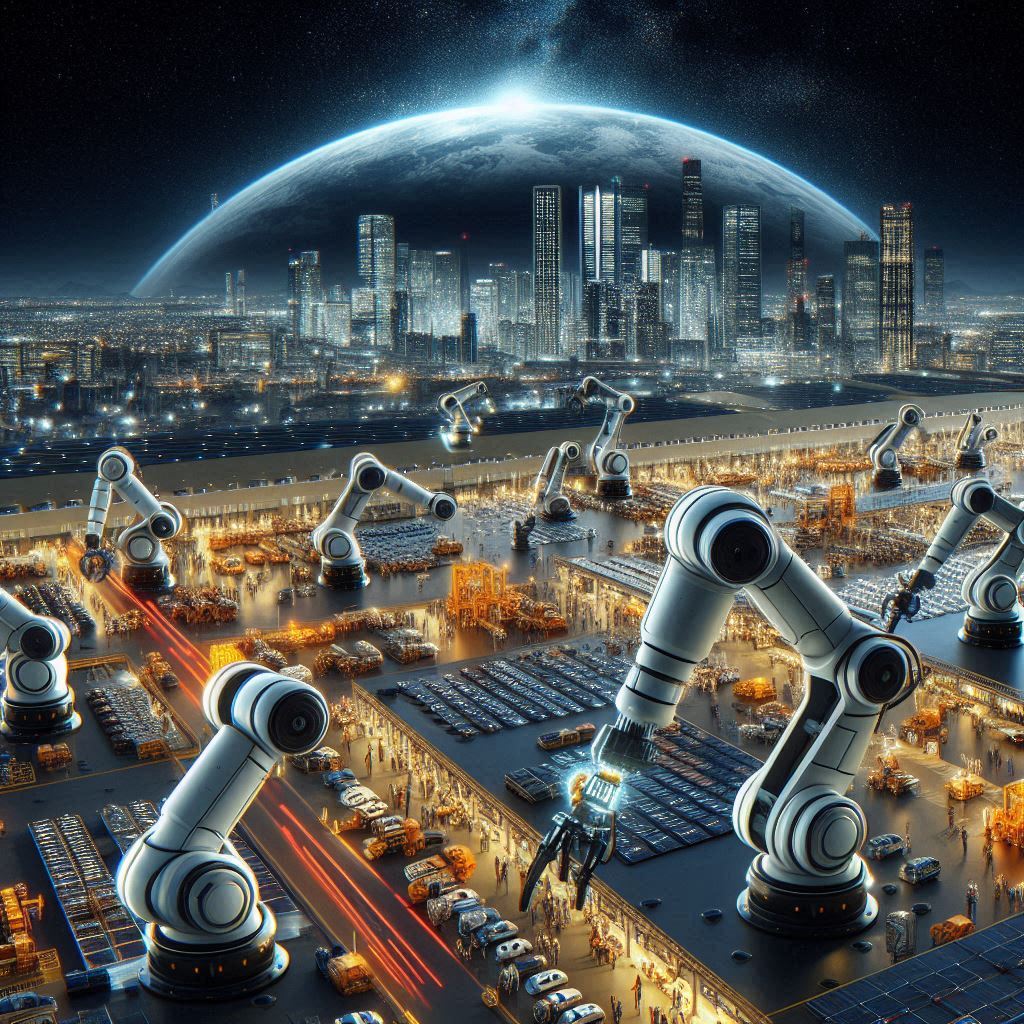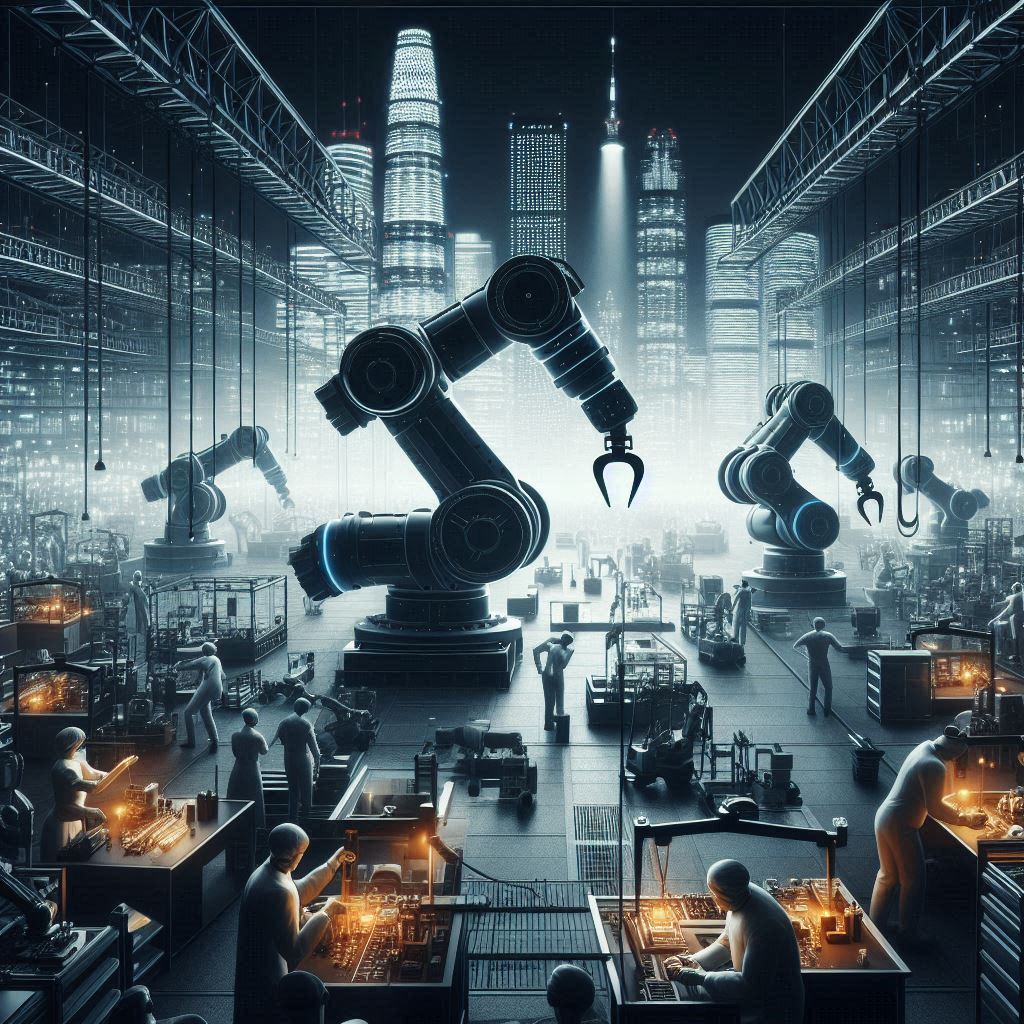The global industrial robots market is undergoing a transformation, driven by advancements in automation, artificial intelligence (AI), and the rise of smart manufacturing. As industries across sectors increasingly rely on robotics to improve efficiency, reduce costs, and maintain competitiveness, the market offers numerous attractive opportunities for both established players and new entrants. With automation becoming a strategic priority across industries like automotive, electronics, pharmaceuticals, and logistics, companies in the industrial robotics space are positioned to benefit from this surge in demand.
https://www.marketsandmarkets.com/pdfdownloadNew.asp?id=643

This article explores the most promising opportunities for players in the industrial robots market, highlighting key trends, technological advancements, and areas of growth that are shaping the future of this industry.
1. Collaborative Robots (Cobots) Gaining Popularity
One of the most attractive segments within the industrial robots market is the rapid rise of collaborative robots, or cobots. Unlike traditional robots that operate in isolated environments, cobots are designed to work alongside human workers, providing flexibility, safety, and ease of use. Cobots are increasingly being adopted in industries such as electronics, automotive, and logistics, where tasks require precision, repetitive actions, or small batch production.
The global cobot market is expected to see substantial growth due to its relatively lower cost compared to traditional industrial robots and its ability to be integrated into existing production lines without significant changes. For companies operating in the industrial robotics space, investing in the development of cobots that are adaptable, intuitive, and AI-driven presents a lucrative opportunity.
2. Smart Factories and Industry 4.0 Revolution
The ongoing Industry 4.0 revolution, characterized by the integration of AI, IoT, big data, and robotics, is a major driver of industrial robots’ demand. The concept of smart factories—where machines, robots, and humans work in interconnected systems—offers unparalleled opportunities for industrial robot manufacturers. By embedding AI and machine learning capabilities into robots, companies can enable predictive maintenance, real-time data analysis, and improved decision-making on production lines.
Smart factories are being embraced across industries, including automotive, electronics, and consumer goods, as businesses aim to improve productivity and reduce downtime. Robotics companies that develop robots with advanced sensing, connectivity, and real-time processing capabilities are well-positioned to capture a significant market share in the growing smart manufacturing landscape.
3. Customized Automation for Small and Medium-Sized Enterprises (SMEs)
While large corporations have long embraced automation, there is a growing opportunity to cater to small and medium-sized enterprises (SMEs) that are looking to adopt robotics for the first time. Historically, the high cost of industrial robots has been a barrier for SMEs, but advancements in technology are making robots more affordable and accessible.
Developing cost-effective, easy-to-install robots specifically designed for SMEs is an attractive opportunity for players in the industrial robotics market. These solutions could include plug-and-play robots, cloud-based robotic systems, and pay-per-use models, allowing SMEs to reap the benefits of automation without the high upfront investment. Companies that can offer flexible financing options or robots-as-a-service (RaaS) models will have a competitive advantage in this growing market segment.
4. Robotics for Logistics and Warehousing
The logistics and warehousing industry is witnessing a surge in demand for automation due to the rise of e-commerce and changing consumer behaviors. The need for fast, efficient, and error-free order fulfillment has created a significant opportunity for industrial robot manufacturers, particularly those focusing on automation in material handling, picking, sorting, and packaging tasks.
The development of autonomous mobile robots (AMRs), automated guided vehicles (AGVs), and robotic arms for warehouse automation presents a high-growth opportunity. With the rise of e-commerce giants such as Amazon and Alibaba, the logistics sector is expected to continue investing heavily in robotics, creating an attractive market for companies specializing in robotic solutions for warehousing and distribution centers.
5. AI-Driven Robotics for Enhanced Productivity
The integration of AI into industrial robots is unlocking new possibilities for increased productivity and efficiency. AI enables robots to learn from their environment, optimize processes, and make decisions based on real-time data. Companies that incorporate AI into their robotic systems can offer enhanced value to industries that require precise, repetitive, and complex tasks.
For example, AI-powered robots can be used in quality control processes to identify defects in manufacturing, reducing waste and improving overall product quality. In addition, AI-enabled robots in the automotive and electronics sectors can accelerate production cycles and improve flexibility on assembly lines. Robotics companies that leverage AI and machine learning will be able to differentiate their products in the competitive industrial robots market.
6. Emerging Markets with Growing Industrialization
Emerging markets in Asia, Latin America, and Eastern Europe present significant opportunities for industrial robot manufacturers. Countries such as China, India, Brazil, and Mexico are experiencing rapid industrialization, leading to an increased demand for automation to improve productivity and reduce operational costs.
China, already the largest market for industrial robots, is expected to continue its dominance, driven by its manufacturing sector and government initiatives promoting advanced automation technologies. Meanwhile, India is an emerging market with huge potential, especially as the country shifts toward higher industrial output and adopts automation in its manufacturing processes.
Companies that establish a strong presence in these emerging markets, either through local partnerships or direct investment, can capitalize on the growing demand for industrial robots in these regions.
7. Healthcare Robotics
The healthcare industry is becoming an increasingly attractive area for industrial robot applications. Robots are being used in medical device manufacturing, pharmaceutical production, and even hospital automation for tasks such as dispensing medication, sterilizing equipment, and assisting in surgeries.
As the demand for personalized medicine and efficient healthcare services rises, robotic solutions for medical and pharmaceutical industries present a new avenue for growth. Developing robots that can handle highly specialized tasks in sterile environments, assist with precision surgeries, or automate repetitive tasks in healthcare facilities will open new market opportunities for industrial robot manufacturers.
8. Green Manufacturing and Sustainability
The global push toward sustainability and green manufacturing is driving industries to rethink their production processes. Companies are seeking ways to reduce their environmental footprint through energy-efficient and eco-friendly automation technologies. Industrial robots that support green manufacturing processes, such as reducing material waste, optimizing energy consumption, and enabling recycling processes, are gaining attention.
Robotics companies that focus on sustainability, such as developing energy-efficient robotic systems or robots capable of operating with minimal environmental impact, will tap into a growing market of environmentally conscious industries.

The future of industrial robotics is brimming with attractive opportunities for companies that can stay ahead of the curve. From the rise of collaborative robots and smart factories to expanding into emerging markets and leveraging AI-driven solutions, the industrial robots market offers significant growth potential for both established players and new entrants. By focusing on the key trends driving demand, such as customization for SMEs, logistics automation, healthcare robotics, and green manufacturing, companies in the robotics space can position themselves to thrive in a rapidly evolving market.
As automation becomes increasingly vital to industries worldwide, players in the industrial robotics market that prioritize innovation, flexibility, and sustainability will be well-equipped to seize these opportunities and lead the charge in the future of automation.
